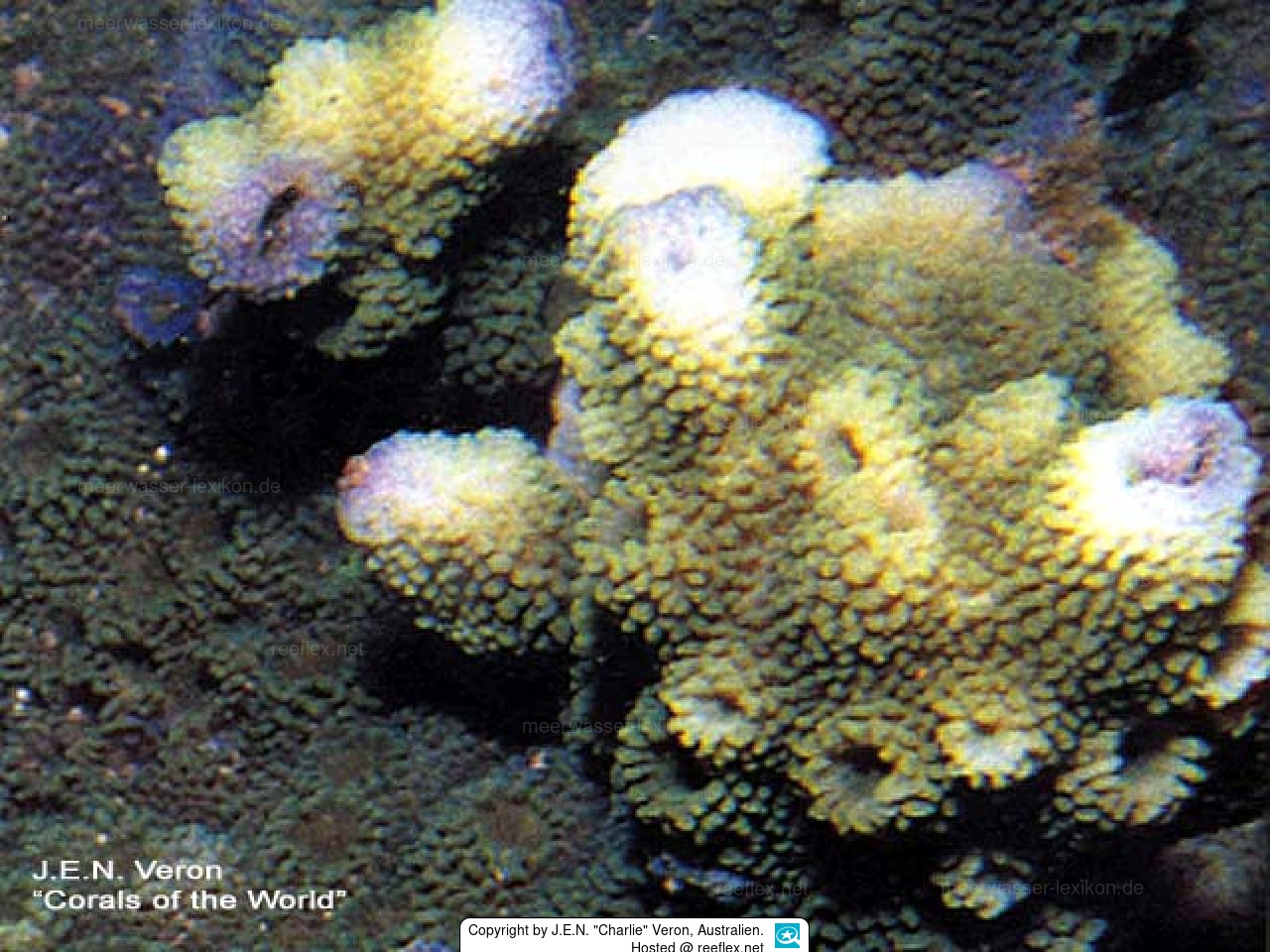Info
Astreopora macrostoma
Veron and Wallace, 1984
Characters: Colonies are submassive plates, usually with irregular upper surfaces and sometimes with short rootlets on lower surfaces. Corallites are large and irregularly but widely spaced, either immersed or curved, and face different directions.
Colour: Yellow-brown or blue (which may photograph purple).
Habitat: Shallow reef environments.
Abundance: Uncommon.
Similar species: Acropora ocellata
Classification: Biota > Animalia (Kingdom) > Cnidaria (Phylum) > Anthozoa (Class) > Hexacorallia (Subclass) > Scleractinia (Order) > Acroporidae (Family) > Astreopora (Genus) > Astreopora macrostoma (Species)
Source reference: Veron (2000). Taxonomic reference: Veron and Wallace (1984). Additional identification guides: Veron (1986), Nishihira and Veron (1995).







 Dr. John Edward Norwood "Charlie" Veron, Australien
Dr. John Edward Norwood "Charlie" Veron, Australien

















